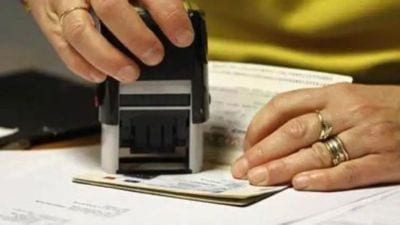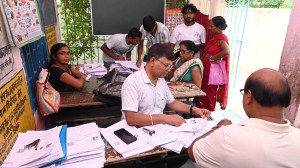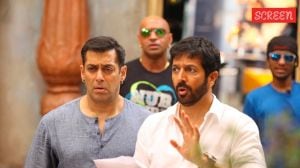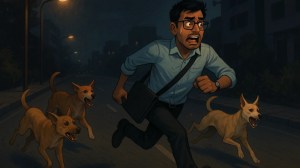Stay updated with the latest - Click here to follow us on Instagram
Emilie kept in touch with Netaji’s family even after disappearance
Bose had also left a letter addressed to his brother and asked Emilie to take photographs of the same and send copies to (Sarat Chandra Bose) if anything happened to him.
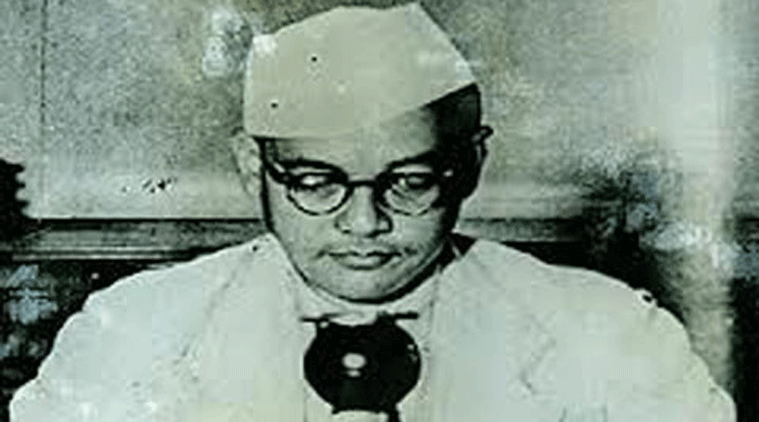 The 64 files made public by the West Bengal government on Friday showed that while Bose never returned to Europe to his daughter and wife Emilie Schenkl, they continued to write to Netaji’s family after his disappearance.
The 64 files made public by the West Bengal government on Friday showed that while Bose never returned to Europe to his daughter and wife Emilie Schenkl, they continued to write to Netaji’s family after his disappearance.
NETAJI SUBHAS Chandra Bose saw his daughter Anita only once, when she was four weeks old. He was about to pay another visit to her in Vienna in 1943, but his “sudden departure” prevented this.
The 64 files made public by the West Bengal government on Friday showed that while Bose never returned to Europe to his daughter and wife Emilie Schenkl, they continued to write to Netaji’s family after his disappearance.
An intercept, recorded in the Calcutta Police Security Control’s Weekly Survey — dated May 4, 1946 — refers to Schenkl as a person who “claims to be the widow of Subhas Chandra Bose”.
WATCH VIDEO: West Bengal Government Declassifies Files On Netaji Subhas Chandra Bose
It added that she “joined Subhas Bose in Berlin in April 1941 and remained with him until the autumn of 1942… Bose proposed to her and they were married in January 1942. On November 29, 1942, a daughter was born… Emilie Schenkl returned to Vienna from Berlin in September so as to avoid talk…”
[related-post]
The intercept goes on to say the marriage wasn’t registered on account of German (government) objection to Germans marrying foreigners. Schenkl claimed that the two had got married following Hindu traditions.
Bose had also left a letter addressed to his brother and asked Emilie to take photographs of the same and send copies to (Sarat Chandra Bose) if anything happened to him.
After news of Netaji’s death reached Schenkl in 1945, she wrote a letter to the Bose family that was subsequently intercepted by the West Bengal intelligence bureau. In it, she makes it clear that she was not “asking for financial aid” and ended up giving a “description of her daughter and mentions the shock she felt when she heard of Subhas Bose’s death”, the 1946 note added.
In 1948, Schenkl met Sarat Chandra Bose and his family in Vienna. Thus began a correspondence, which had at its heart tales about the growing up years of Netaji’s daughter Anita Pfaff and the hope that one day he would return.
On May 11, 1949, Schenkl wrote to Sarat Chandra Bose: “We can only hope that our feelings may become reality and one day that your brother will return. This is the only thing I am praying for.”
Anita, she wrote, wanted to learn English so that “she might be able to speak to you (Sarat Chandra Bose) when she meets you again”. At the time, Anita was 7 years old.
Schenkl wrote: “On Sunday last (it was Mother’s Day), she presented me with a poem, which she recited to me…”
Schenkl also remained in touch with other members of the family, including Chitra Bose, Sarat Chandra Bose’s daughter. In a letter in 1949, conversations ranged from descriptions of Easter Celebrations in Vienna — which Schenkl described as “a most boring affair” — to watching the movie Jungle Book with Anita, who was “was frightened because of the tiger and snakes, but she liked the elephants very much”.
A state government official, closely involved with the process of declassifying the 64 files, said: “It seemed that the Indian government believed that if Bose was alive, news would definitely reach Emilie and Anita, so they kept a close eye on any correspondence coming from Vienna. But her letters seem to be concerned primarily with Anita growing up without her father and she trying to somehow bridge the two worlds.”
The 1949 letter to Chitra Bose ends with the postscript — “Did your father (Sarat Chandra Bose) get the letter in which Anita added a few words in her own handwriting?”
The reply, however, wasn’t a part of the documents that were declassified on Friday. Officials said perhaps the letter escaped interception.


